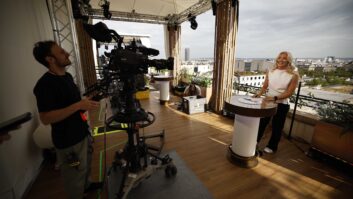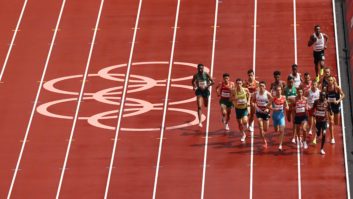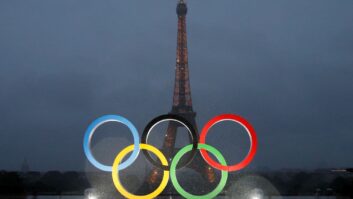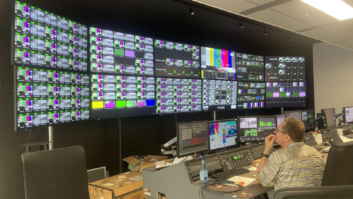After three Olympic Games in Asia, (both Summer and Winter) the ‘Greatest Show on Earth’ returns to Europe as Paris plays host to the XXXIII Olympiad. For the team at Warner Bros Discovery Sports Europe (WBD Sports), that means delivering a “home” Olympics to 47 markets in 19 languages.
Each of those different markets can take the broadcaster’s centrally produced content, aka the ‘pan feed’, while the 10 larger priority markets across the group, based mostly on population and audience, can break away and create their own local feed.
“That means they can focus on the sports that are relevant to their audience because not all sports are as relevant to each market,” Scott Young, group SVP content, production and business operations at Warner Bros Discovery Sports Europe tells TVBEurope.
“The superpower of Eurosport is being able to say, here is everything in one batch across our pan feeds, or you can localise the sport that matters, like handball for France, Germany and Sweden, whilst other markets are probably less focused on that sport, so it’s a really key part of our 47 market distribution.”
WBD Sports will have a technical facility at the International Broadcast Centre (IBC) in Paris. “We don’t do anything really at the IBC anymore,” says Young “other than at least land the OBS feeds, which means that the contribution between what OBS are doing and what we’re doing is robust”.
Instead, the feeds will be sent to WBD Sports’ facilities in London and Paris, with an almost even split between the two.
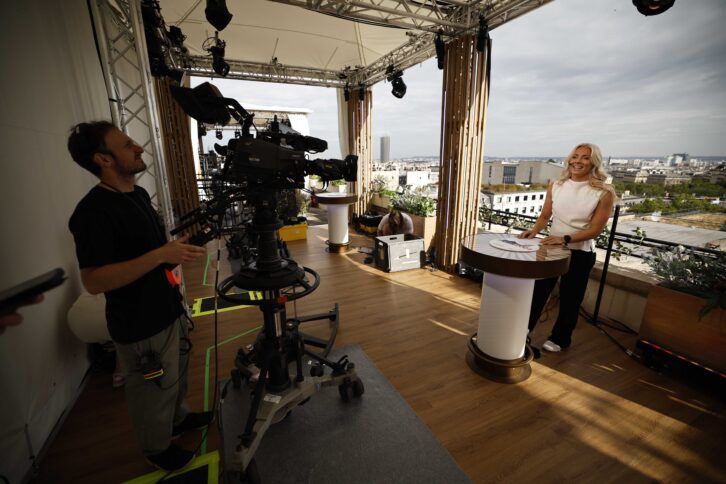
WBD Sports will also have some productions on site at WBD House, based on the rooftop of a Paris hotel featuring a 360-degree view of the city. “From the Opening Ceremony night, when we release our host studio, the pictures are going to be spectacular. We’ll have a mix of on-site and home-based production, but effectively we lean very much into being a remote broadcaster.”
The broadcaster will offer fans two ways of watching the Games, linear and streaming (MAX and discovery+). The linear version will be a “lean back” experience, with each location curating the best of the pan feed that is most relevant to the audience in their market. For streaming, audiences will be able to watch every live sport that’s going on at any given time. “Across the entire Olympics, 3,800 hours of live sporting content will be available,” says Young. “True sports fans can follow the sport they love when they want to watch it and where they want to watch it.”
One key innovation available to fans watching the streaming offering is medal alerts. If a viewer is watching swimming, for example, they’ll get an alert to say a medal is being contested in another sport so they can jump across to that stream. “It’s a great innovation for people who are diving all the way into our streaming platform and enjoying the sports they love and following their favourite athletes, and whether it be a sport or an athlete or their nation, they will also be alerted when other things are taking place,” adds Young.
Because WBD Sports will be taking its pictures from OBS, Young says that the job of the in-house team is to tell the story of the Olympics and follow the 10,500 athletes that are taking part. The broadcaster tasks its team with following the athletes’ journey before they arrive in order to help the audience understand why they should care about each one. “To get to know the vast number of athletes that are there you have to break it down into the local market,” he continues. “Whether it’s a local market or a local sport, it’s important that we follow that journey of that athlete.”
WBD Sports works closely with the National Olympic Committees of each country taking part, with the producing teams spending nearly a year in close collaboration with the NOCs working to bring the athletes’ stories to life. “Our innovation is really about the content gathering and then distribution,” adds Young. “No other broadcast platform in the world produces the volume of content that we’re going to produce in Paris 2024 and this is primarily because we are a linear business and streaming business, and our content is shared.”

During previous Olympics, WBD Sports has used its Cube studio as the main presentation point, but as Paris 2024 is in the broadcaster’s “backyard”, it will “step away” from the Cube in terms of presentation for this Games. Instead, the Cube will be used to help explain some of the lesser-known sports to viewers. “We’re going to pre-package content in the Cube, which we’ve already done, and that will help viewers who are not au fait with archery or shooting or those sports that don’t normally get the big spotlight of attention unless the Olympics are on. We’ll be creating explainers to help people understand the rules and how the competition is judged,” explains Young.
Obviously, the run-up to Paris 2024 has been slightly shorter than usual due to the Tokyo Games being pushed back a year. But Young believes WBD Sports has everything in place to deliver all that viewers will want to watch, and he knows this because the team has already replicated an Olympic Games feed in its buildings in London and Paris, with 250 commentators joining to commentate on their events.
“Last month we spent two days rehearsing the Olympic Games,” he explains. “Because of the complexity of what we’re doing across our 47 territories in 19 languages, we wanted to make sure that all of our teams and all of our markets, including our central teams, were all on the same page and fully aware of the challenge ahead.
“We integrated all the different sports between the backend of our linear and streaming platforms. It demonstrated just how cool this is going to be from a fans’ perspective, because the amount of content that we can shift across from one channel to the next, the immersive experience we can showcase, is a fantastic weapon at our disposal.”
